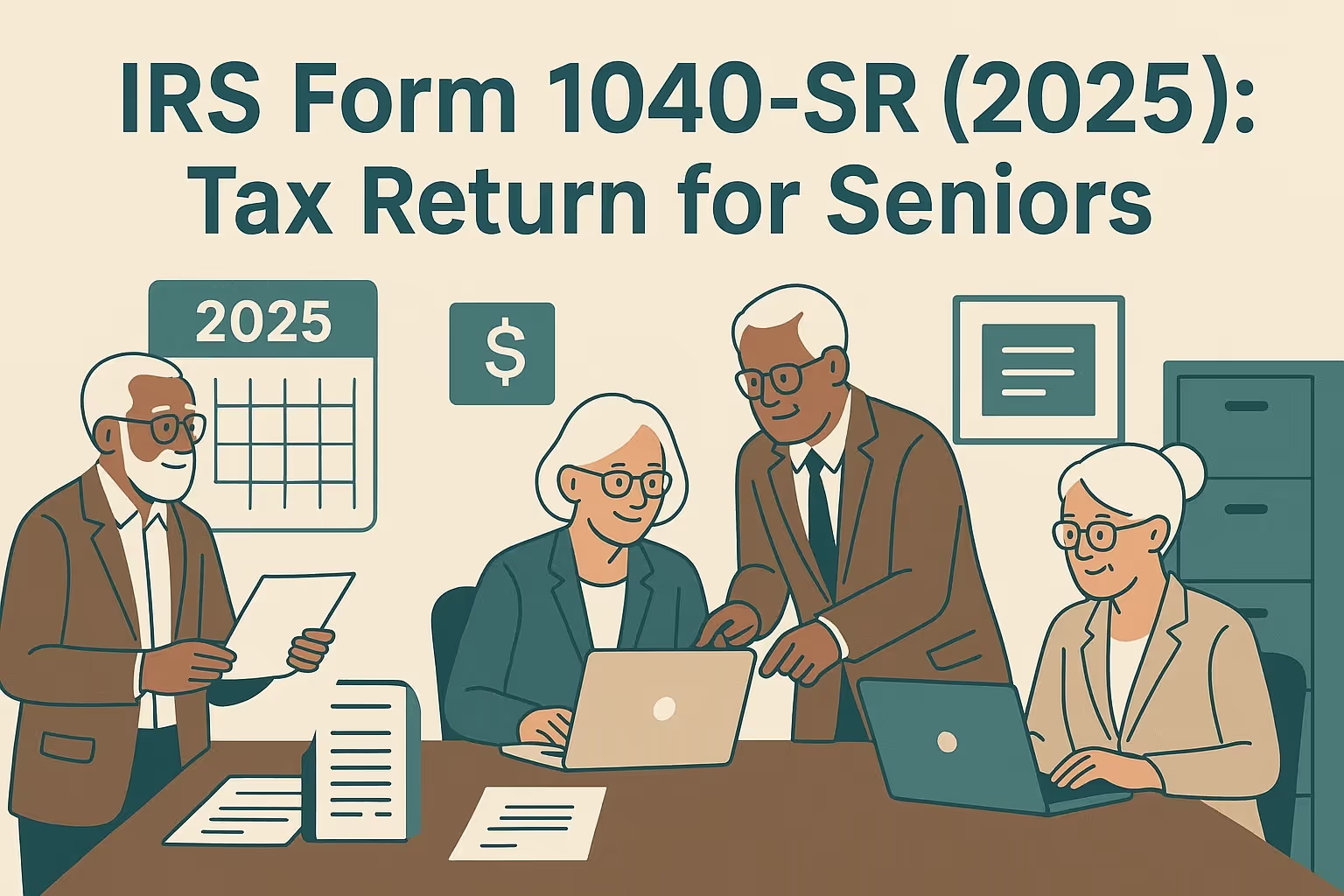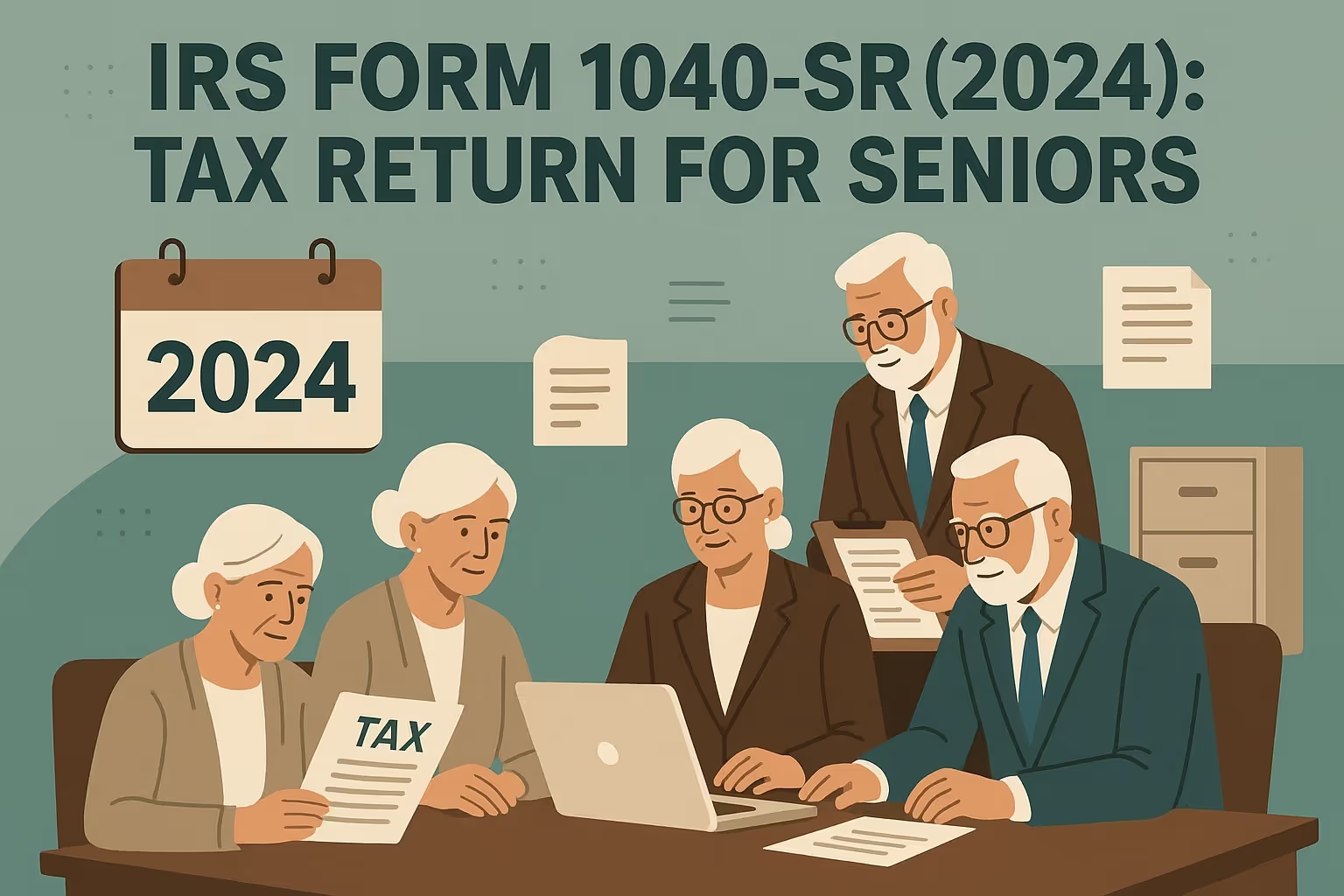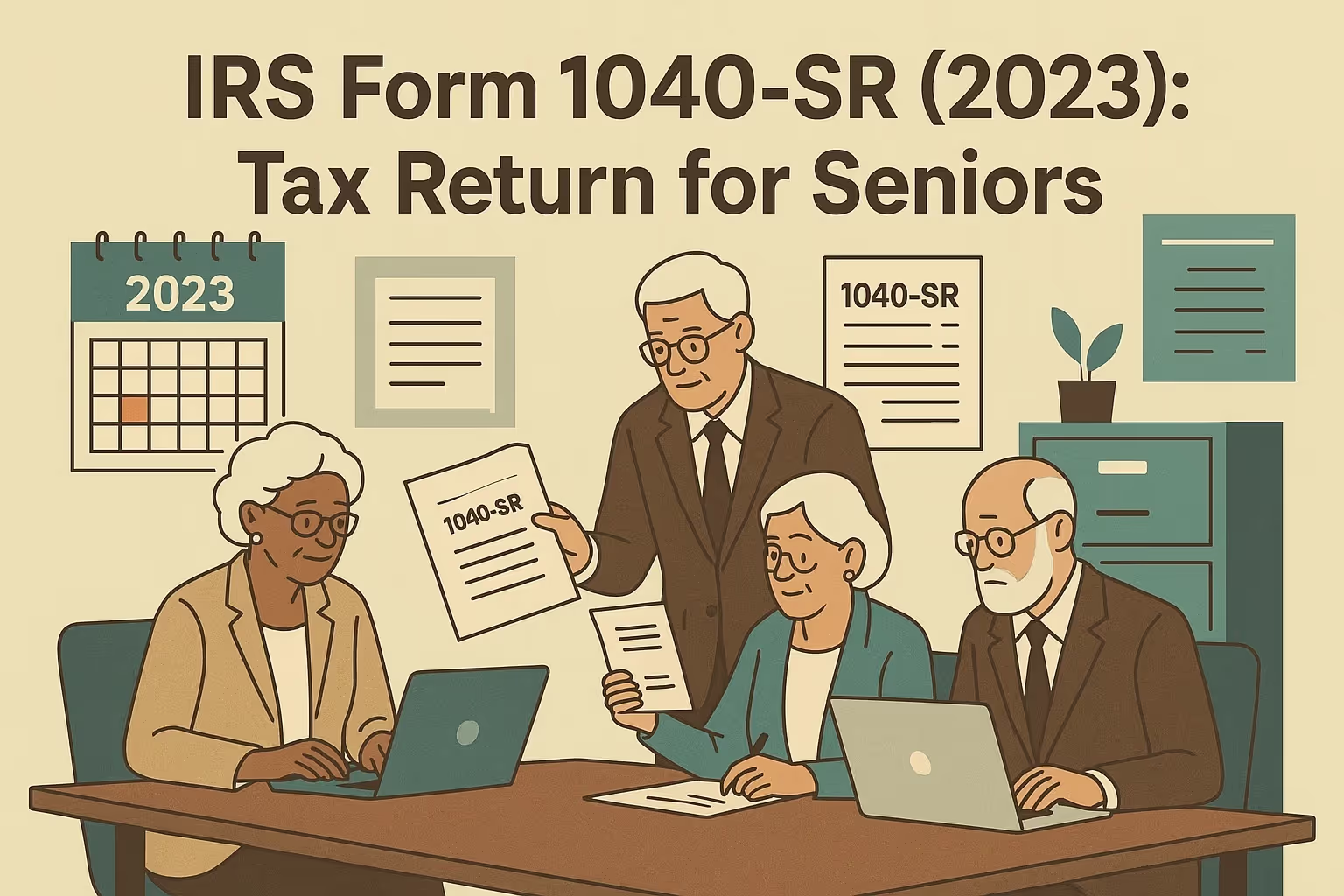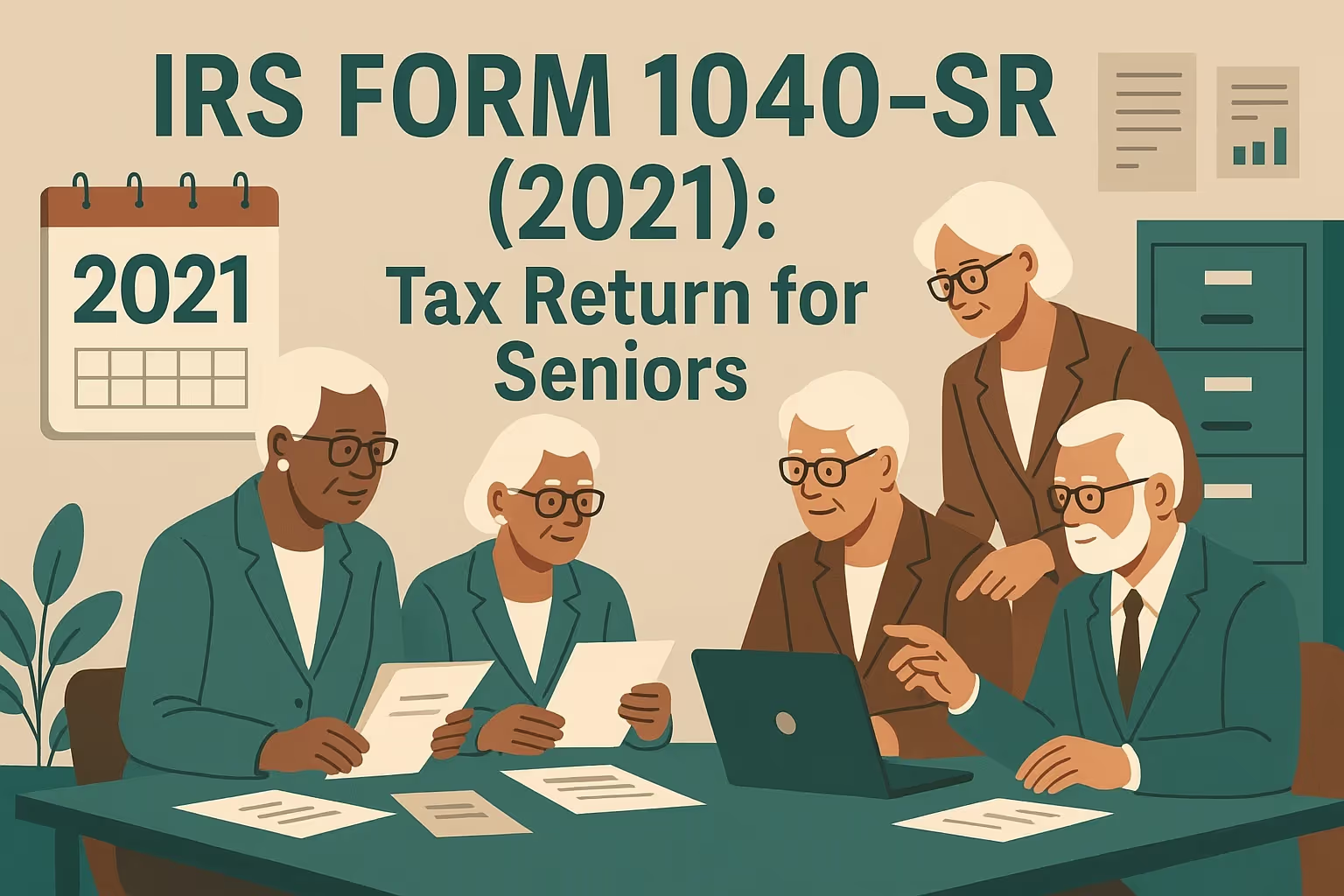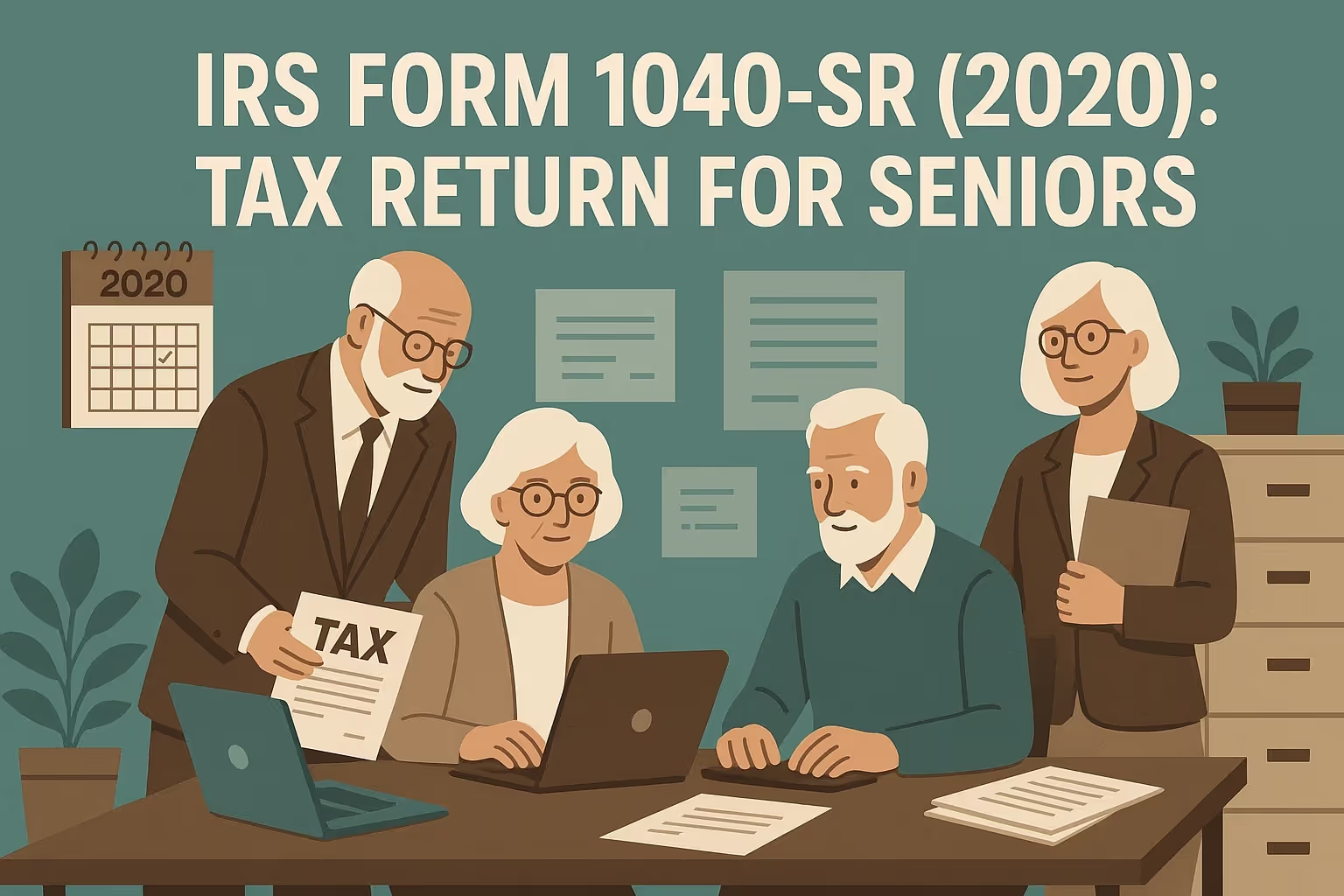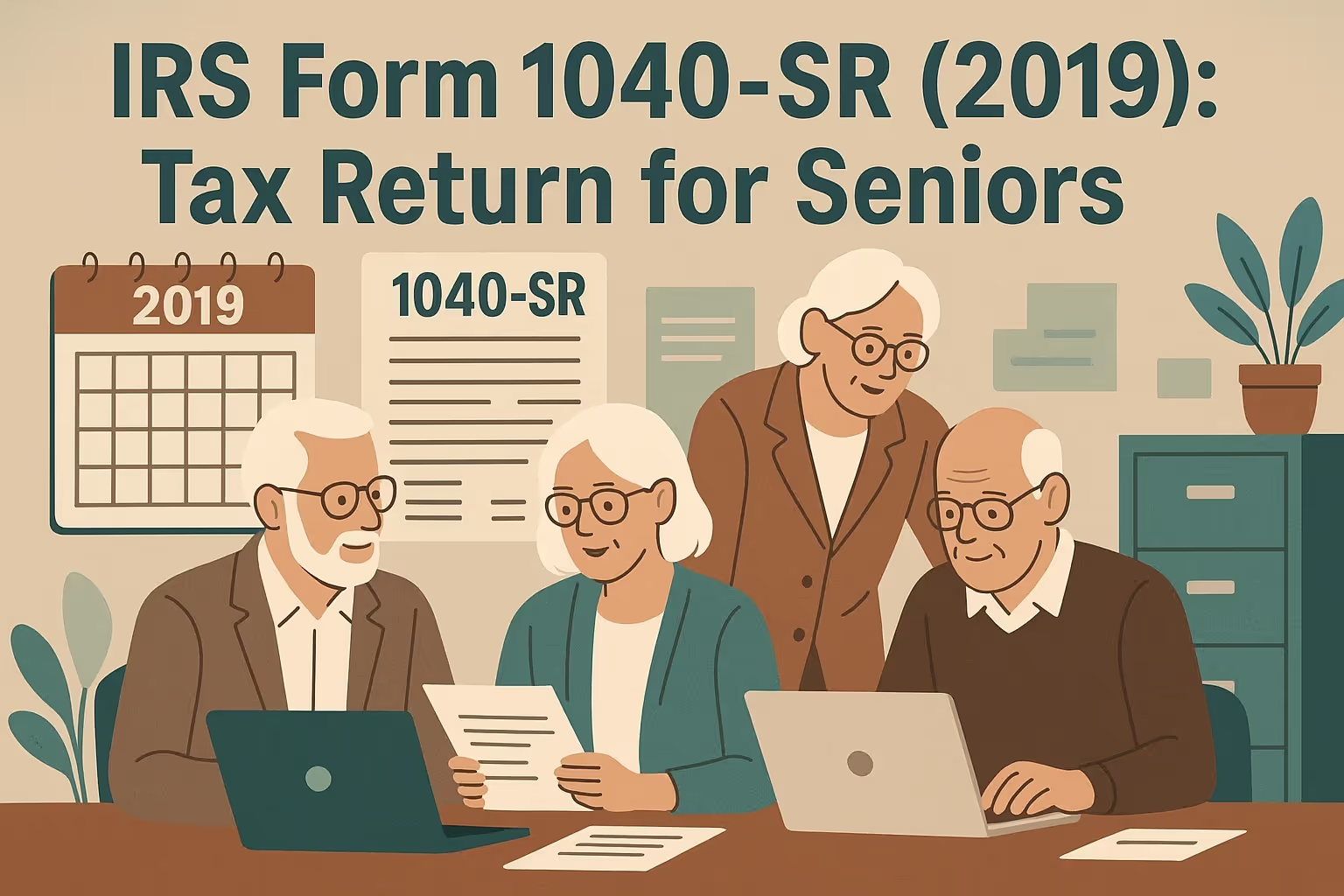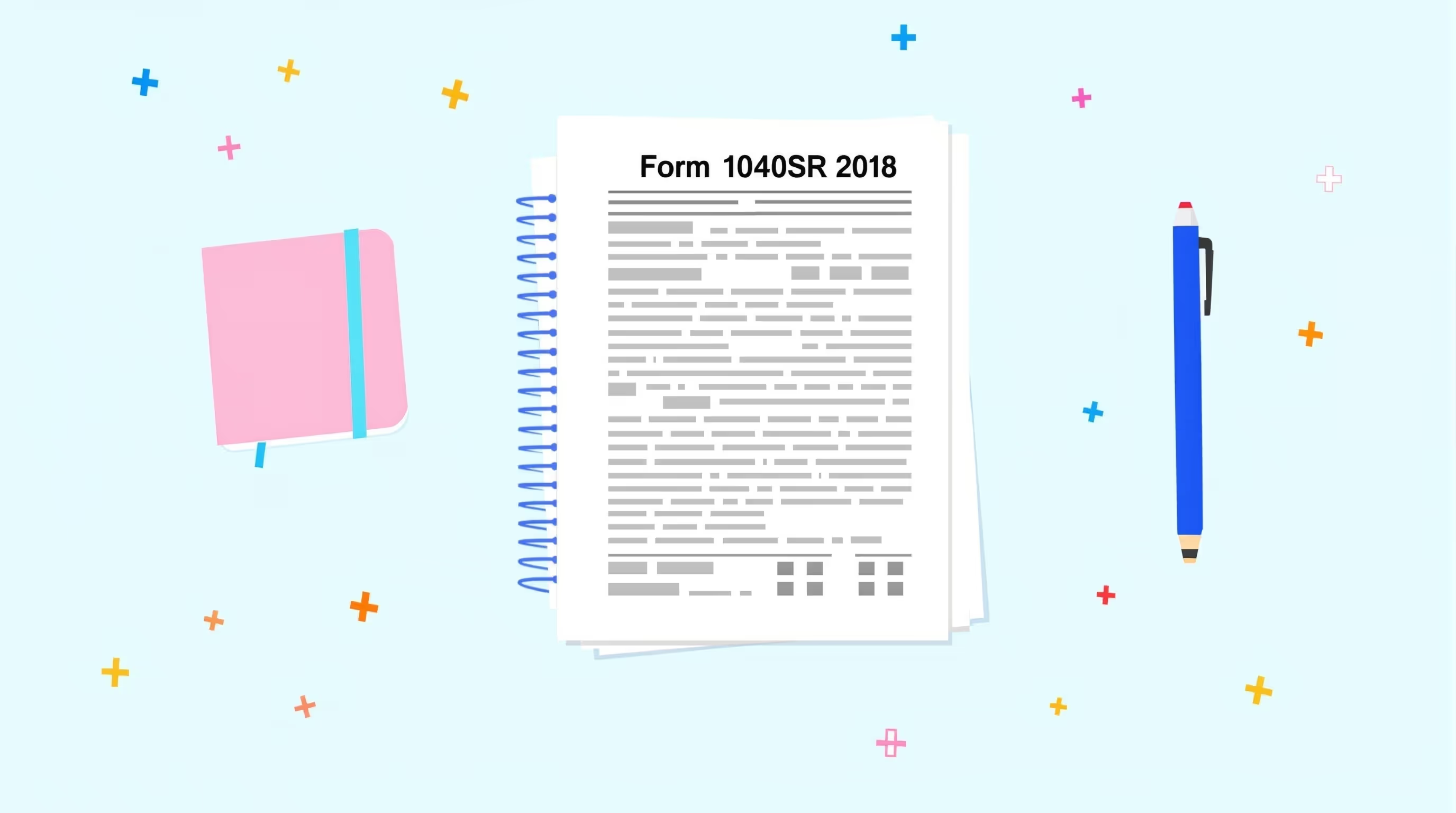IRS Form 1040-SR (2022): Tax Return for Seniors
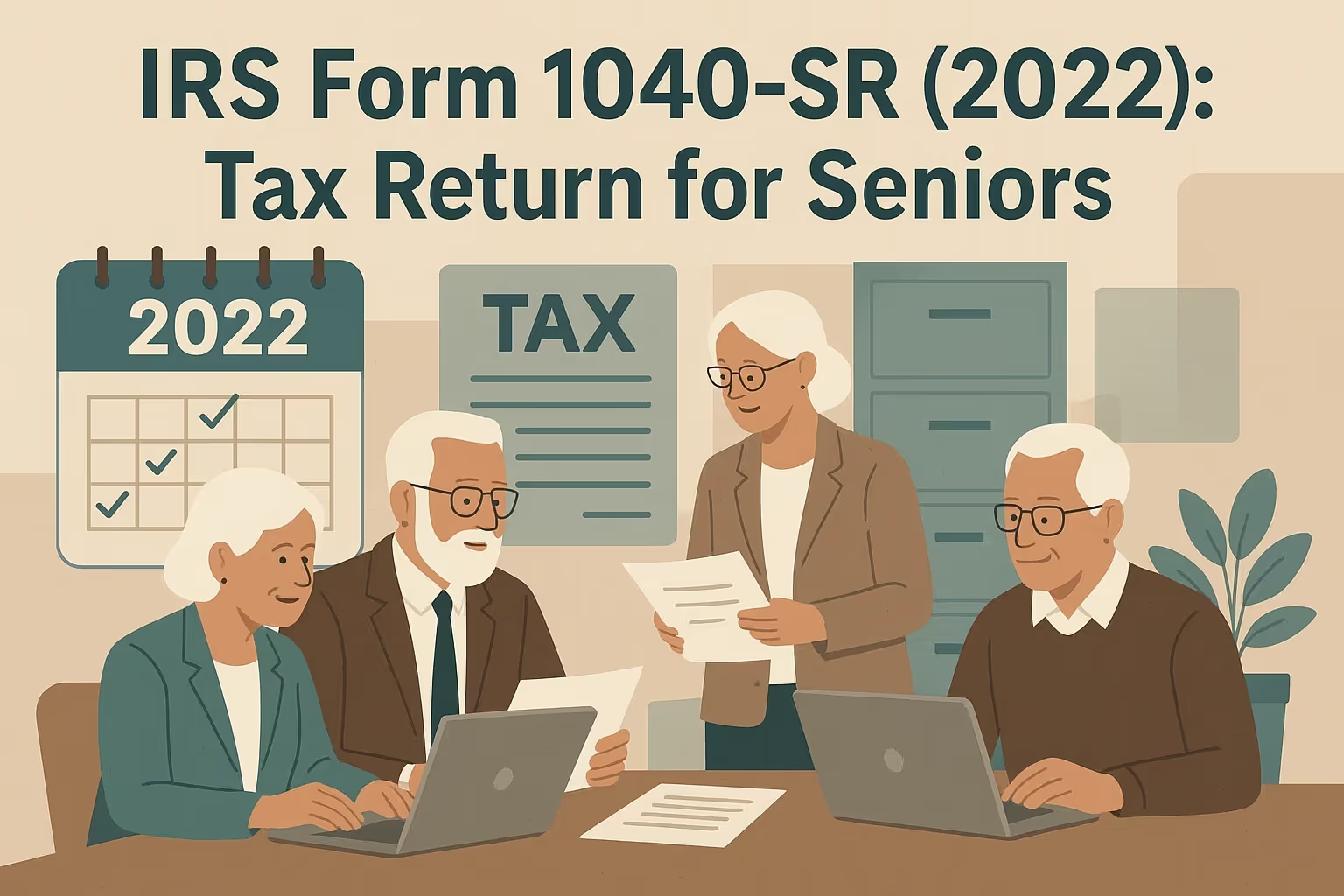
What IRS Form 1040-SR (2022) Is For
IRS Form 1040-SR (2022) is a specialized version of Form 1040, specifically designed for taxpayers aged 65 or older. It’s designed for individuals, seniors, and older people who want a more transparent format with larger print and a standard deduction chart. The calculations are identical to the regular Form 1040, covering taxable income, deductions, credits, and taxes owed or refunded.
This form can be used by retirees reporting retirement income, Social Security benefits, dividends, wages, or other forms of income. It’s also appropriate for self-employed individuals filing Schedule C or those with additional income such as unemployment compensation, interest, or profit from a small business. For a broader overview of how this form works in general, you can review our guide to the Form 1040-SR U.S. Tax Return for Seniors.
When You’d Use Form 1040-SR for 2022 (Late or Amended Filing)
You can still file Form 1040-SR for the 2022 tax year if you missed the April 18, 2023, deadline or received an IRS notice about unfiled returns. Taxpayers may decide to file late to claim a refund or correct an earlier tax situation. Refund claims must be submitted by April 18, 2026.
If you owe a tax bill, penalties and interest may apply until the balance is paid. Many filers choose to pay through their IRS online account or financial institutions that support electronic payments. Self-employed seniors should ensure that self-employment tax is included in their total tax calculation.
If you have multiple years of unfiled returns, our article on unfiled federal income tax returns from 2010 to 2024 explains how the IRS handles older years and what to expect when catching up.
Key Rules Specific to 2022
- The standard deduction amounts for 2022 were $12,950 for single filers, $25,900 for married couples filing jointly, and $19,400 for heads of household.
- Seniors aged 65 or older received an additional deduction of $1,750 if single or the head of household, or $1,400 per spouse if married and filing jointly.
- The filing deadline for the 2022 tax year was extended to April 18, 2023, because of Emancipation Day in Washington, D.C.
- Blind or older filers may be eligible for additional deductions in addition to the standard amount.
- Taxpayers could claim the student loan interest deduction, the child tax credit, or other tax credit options if they met the income limits and eligibility requirements.
Step-by-Step (High Level)
- Gather records: Collect W-2s, 1099s, or other forms reporting income, dividends, or unemployment compensation. You may also need details from past returns.
- Complete Form 1040-SR: Enter your wages, business income, and self-employment profit. Include any student loan interest or additional income reported on Schedules 1–3.
- Attach required schedules: Use Schedule C for business income and other schedules for AMT, itemized deductions, or credits such as the child tax credit.
- File electronically or mail: You can e-file using IRS-approved software or print and mail your return to the address listed in the 2022 instructions.
- Keep copies: Retain your tax return, payment records, and supporting documents for a minimum of three years.
Common Mistakes and How to Avoid Them
- Using the wrong form year: Always verify you’re filing the 2022 version of Form 1040-SR, not a prior year’s form.
- Forgetting to report retirement income or certain income: Include all sources such as Social Security benefits, dividends, or profits from self-employment.
- Not checking senior or blindness boxes: Review the top of the form carefully to ensure these boxes are correctly marked if applicable.
- Miscalculating taxable income or deductions: Use the senior standard deduction chart and verify math on all schedules before filing. If you are unsure which schedules to attach or how specific lines work, visit our IRS Form Help Center for plain-language explanations of the most common IRS forms and attachments.
- Missing the student loan interest deduction: Check eligibility for this deduction before submitting, especially if you paid qualifying student loan interest.
- Omitting signatures or incorrect account information: Ensure that both spouses sign joint returns and that refund or payment account information is accurate and up-to-date.
- Failing to include required schedules: Attach all necessary schedules for additional income, itemized deductions, or credits to prevent IRS processing delays.
What Happens After You File
Once your return is filed, the IRS processes e-filed returns in about three weeks. Paper returns take 6–8 weeks or longer. You’ll receive confirmation once your return is accepted, a refund, or a balance due notice.
If you owe taxes, you can apply for a payment plan, make online payments, or request penalty relief if you show reasonable cause. Our detailed guide to IRS payment plans explains who qualifies, how monthly payments are calculated, and the application process, which can be completed online or by mail.
FAQs
Can I still file my 2022 Form 1040-SR and get a refund?
Yes, you can file a late 2022 tax return by April 18, 2026, to claim any refund that may be due. After that date, the IRS cannot issue refunds for that tax year. Refunds may be available due to overpayments, withheld wages, or eligible tax credits.
Will I be penalized for filing my 2022 return late?
If you’re owed a refund, no penalty applies. If you owe taxes, the failure-to-file penalty is 5% per month (up to 25%), and the failure-to-pay penalty adds 0.5% per month. Filing promptly reduces interest and charges.
How do I obtain my 2022 tax transcripts?
Request them online through IRS.gov, by phone, or by mailing Form 4506-T. These transcripts show reported income and payments from employers, financial institutions, or self-employment records. Reviewing them helps verify accuracy and avoid errors before submitting your tax return. If you need your prior year's income to e-file, see our guide on how to find last year’s AGI to file your tax return.
Is Form 1040-SR required for seniors?
No, seniors may use either Form 1040 or 1040-SR. Both calculate income tax the same way and support the exact schedules, deductions, and credits. Form 1040-SR simply offers larger print and a more straightforward layout for older adults.
What if I need to amend my 2022 return after filing?
Use Form 1040-X to amend your return. This applies when correcting income, deductions, or credits. The IRS generally allows three years from the original due date to make changes. Also, remember to amend your state return if it has been affected.
Can I e-file a 2022 tax return that was filed late?
Yes, the IRS still accepts e-filed prior-year returns through authorized software. Electronic filing is faster and reduces errors. Those who prefer paper can mail returns directly.
















